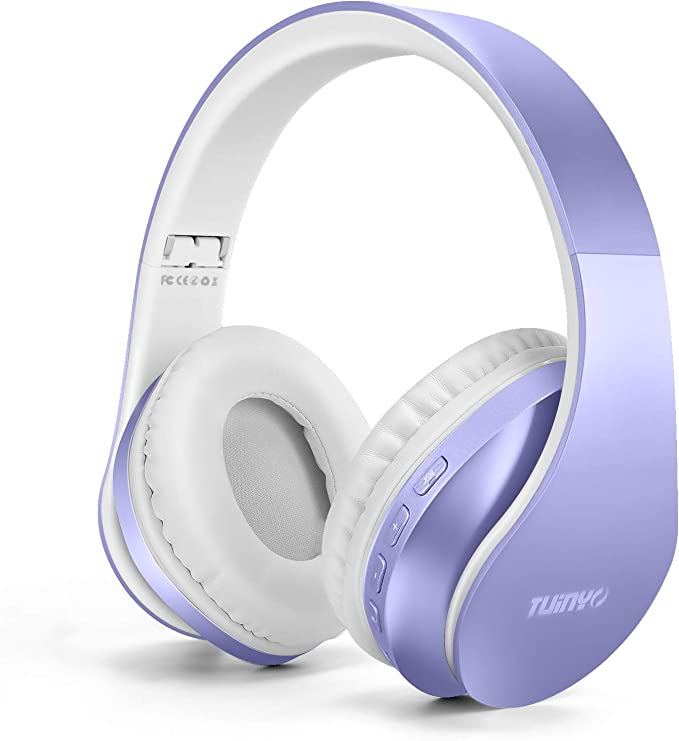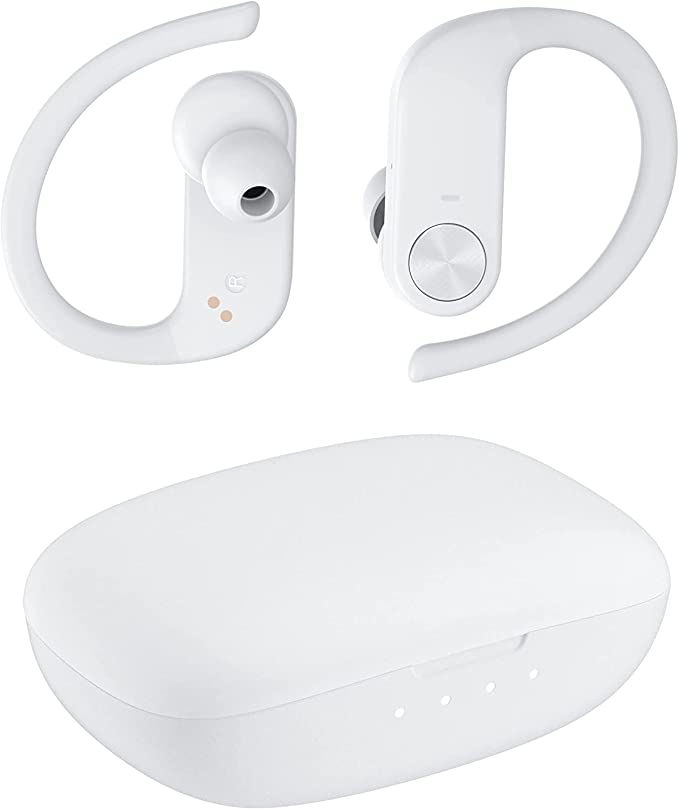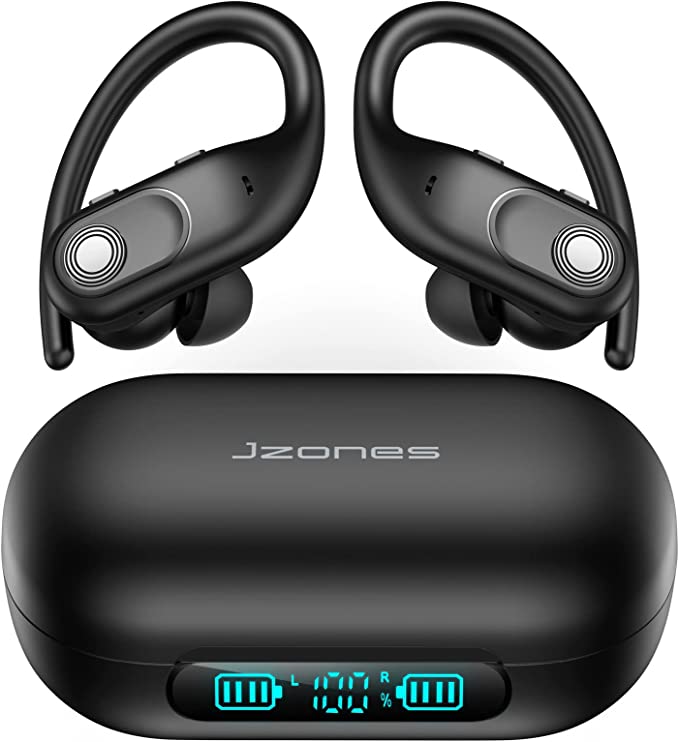In the grand theater of modern life, personal audio has become an indispensable conductor of our daily experiences. Our headphones are no longer mere accessories; they are intimate companions, crafting a shield against the cacophony of the commute, setting the stage for focused work, or weaving the soundtrack to our leisure. Yet, this proliferation of choice can feel like navigating a dense, often bewildering, forest of specifications and marketing claims. How do we find the audio companions that truly resonate with our needs and our understanding?
Today, we embark on an exploration, not of a flagship marvel priced out of reach for many, but of a widely accessible option: the TUINYO WH-816 Wireless Headphones. Our goal isn’t simply to list its features, but to peek behind the curtain, to unravel the threads of science, design, and user experience that form its particular sonic tapestry. This journey is about understanding how everyday technology strives to balance innovation, cost, and that fundamental human desire for good sound and enduring comfort. Let us be guided by the principles of science and the echoes of user experiences (drawn from manufacturer-provided information on its Amazon product page) to see what a product like the WH-816 can teach us about the audio world we inhabit.

The Unseen Handshake: Bluetooth 5.0 and the Dance of Data
The very notion of “wireless” headphones hinges on a remarkable piece of technology, one whose name carries a surprisingly regal and historic weight: Bluetooth. Named after Harald “Bluetooth” Gormsson, a 10th-century Danish king famed for uniting disparate Danish tribes, the technology, in a similar spirit, aims to unite our devices seamlessly. From its nascent stages, Bluetooth has evolved significantly, and the TUINYO WH-816 incorporates version 5.0. But what does this numerical designation truly signify for your listening pleasure?
When a spec sheet boasts “Bluetooth 5.0,” it’s pointing to several potential enhancements over its predecessors. Generally, this version offers improvements in speed, range, and data handling capacity, all while often being more power-efficient. For you, the listener, this translates into tangible benefits. “Faster pairing” means less time spent fiddling in settings and more time enjoying your audio. A “stable connection,” as claimed for the WH-816, means fewer frustrating dropouts or stutters, whether you’re engrossed in a podcast during your morning walk or relying on a clear stream for an important hands-free call. The efficiency gains can also contribute, albeit as part of a larger system, to longer battery life – a crucial factor for any portable device.
The TUINYO WH-816 is described by its manufacturer as providing a “quick and stable Bluetooth connection,” compatible with a broad array of Bluetooth-enabled devices like smartphones, tablets, and laptops. This underpins the core wireless experience. Imagine effortlessly switching your audio source from your phone playing music on the bus to your laptop for a video conference once you arrive at your desk. For calls, the product page also mentions “special noise reduction technology” intended to enhance hands-free communication, likely focusing on making your voice clearer to the person on the other end by filtering out some of your immediate background noise. It’s worth noting, as the manufacturer points out, that for older televisions or PCs lacking native Bluetooth, a separate transmitter would be needed to bridge that wireless gap. At its heart, Bluetooth 5.0 in these headphones facilitates that invisible handshake, that constant dance of data packets飞舞 (fēiwǔ – dancing) through the air, striving to keep you connected to your sound.

The Art of Immersion: Crafting Comfort for Hours of Listening
Beyond the invisible signals, the physical interaction between headphones and wearer is paramount. After all, what good is flawless audio if the headset becomes an instrument of discomfort after a mere thirty minutes? The TUINYO WH-816 employs an “Over Ear” form factor, a design choice deeply rooted in ergonomic philosophy. Unlike on-ear or in-ear designs, over-ear headphones, as the name suggests, fully encircle the auricle (the external part of your ear). This approach distributes the clamping force and weight over a larger surface area of the head, rather than concentrating it directly on the sensitive cartilage of the ear itself. The result, often, is the ability to wear them for much longer periods without fatigue, effectively creating your personal, comfortable sound bubble.
A significant contributor to this comfort is the material science at play, particularly the “super soft memory-protein foam leather earmuff” described by TUINYO. Let’s delve into the “memory foam” component. This fascinating material, a type of viscoelastic polyurethane, possesses unique properties. “Visco” refers to its ability to slowly deform under load, and “elastic” refers to its capacity to return to its original shape once the load is removed. When you put on headphones with memory foam earpads, the warmth and pressure from your head cause the foam to soften and conform almost perfectly to the unique contours around your ears. This creates a customized, snug seal that not only enhances comfort by minimizing pressure points but also plays a crucial role in passive noise isolation, which we’ll touch upon later. It’s like a gentle, personalized embrace for your auditory world.
The “protein leather” mentioned is a common synthetic material designed to mimic the feel of genuine leather, offering a balance of softness, durability, and breathability, often at a more accessible cost. Complementing the earpads is the “foldable and stretchable design.” Adjustability is key to ergonomics; a stretchable headband allows the headphones to accommodate various head sizes and shapes, while well-calibrated clamping force ensures they stay put without feeling like a vice. The foldable aspect, coupled with the “protective Premium Case” that TUINYO states is included, speaks to portability – a practical consideration for headphones intended for “Travel, Sport and Every day use.” User feedback from the provided Amazon data echoes these design aims, with one individual noting they are “comfy for over 4 hour flights” and another praising the ability to remove and clean the earpads, a thoughtful touch for long-term hygiene and use.

Decoding the Soundscape: The Pursuit of “Hi-Fi” and Engaging Audio
At the heart of any headphone’s purpose lies its ability to reproduce sound. The TUINYO WH-816 is presented as offering “High Definition Stereo Headphones” and “Amazing Stereo Hi-Fi Sound.” Let’s unpack these terms. “Stereo” sound, the standard for most music listening for decades, utilizes two distinct audio channels – left and right. This separation allows sound engineers to create an acoustic landscape, placing instruments and vocals in different perceived locations, thereby crafting an illusion of space and depth that makes music far more immersive than a single-channel (mono) source.
The term “Hi-Fi,” or High Fidelity, is an aspiration for any audio equipment. It suggests that the sound reproduction is faithful to the original recording, with minimal distortion or coloration. The goal is to hear the music as the artist and engineers intended. In the context of headphones like the WH-816, which are positioned at an affordable price point, “Hi-Fi” likely signifies an aim to deliver a clear, balanced, and enjoyable listening experience rather than meeting the exacting standards of audiophile-grade equipment costing many times more. The manufacturer claims “rich low frequency and clear treble.” The product information further specifies a frequency response that begins at 20 Hz. This figure is significant because 20 Hertz represents the lowest threshold of typical human hearing, crucial for perceiving the deep, resonant bass notes that provide a foundation for much contemporary music. A balanced sound profile would ideally cover the full audible spectrum (typically up to 20,000 Hz) with clarity across all ranges.
The topic of “noise reduction technology” also warrants a closer look. While the descriptive text mentions it, the detailed product specifications state “Noise Control: None.” This, along with user feedback clarifying “There isn’t any noise cancelling,” strongly suggests that the WH-816 employs passive noise isolation rather than Active Noise Cancellation (ANC). Passive isolation is achieved through the physical design of the headphones – the over-ear cups create a seal around your ears, and the dense memory foam helps to block out a certain amount of ambient sound, much like cupping your hands over your ears. This can be surprisingly effective, especially for consistent, droning noises. One user review mentioned that while at the gym, with house music playing over speakers, “these headphones completely block it out!” This highlights effective passive isolation at work, allowing for immersion “even in the lowest volume levels,” as the product page suggests. This is distinct from ANC, which uses microphones and electronics to actively create “anti-noise” waves to cancel out external sounds – a more complex and typically more expensive technology. The “noise reduction” mentioned in the context of calls likely refers to microphone technology designed to make the user’s voice clearer. Users looking for true silence from the outside world should be aware of this distinction. Despite this, many users found the sound quality to be commendable for the price, with one noting it was “the perfect sound that you don’t get from a lot of cheap headphones,” though isolated issues like a “muffled sound” developing in one ear after months were also reported in the provided data.

The Unwavering Pulse: Battery Longevity and the Freedom of Choice (Wired or Wireless)
In our untethered, mobile world, the endurance of our portable gadgets is a constant concern. For wireless headphones, battery life is a critical performance metric. The TUINYO WH-816 is equipped with a 450mAh (milliampere-hour) rechargeable battery. This capacity, according to the manufacturer, translates into approximately “14 hours of music time.” To put this into perspective, a milliampere-hour is a unit of electric charge, indicating how much current a battery can provide for a certain amount of time. The actual playtime can, of course, vary based on factors like volume level and the type of audio content, but 14 hours offers a substantial window of wireless listening – enough for several daily commutes, a long workday, or a significant portion of a long-haul flight. This aligns with user feedback from the Amazon data, where one individual stated they charge the headphones “maybe once or twice a week.”
When the battery does eventually deplete, the headphones are said to feature “2.5 hours Fast Charging” via a micro USB cable (which is listed as an included component). While “fast charging” is a relative term, a 2.5-hour charge time to achieve full capacity for 14 hours of playback is a reasonable turnaround.
However, perhaps one of the most practical features for ensuring uninterrupted audio is the dual-mode capability. The WH-816 allows users to switch to a traditional wired connection using the included 3.5mm audio cable. This seemingly simple feature is an invaluable lifeline. If the battery dies unexpectedly, or if you wish to connect to a device that doesn’t support Bluetooth (like some airplane entertainment systems or older audio equipment), the 3.5mm jack ensures you can continue listening. The 3.5mm audio jack, a venerable standard in the audio world, provides a direct analog connection that doesn’t rely on the headphones’ internal battery for basic audio playback (though some features might be inactive in wired mode). This flexibility is a significant advantage. It’s worth noting, however, one user review in the provided data mentioned a specific issue when using the wired jack with language learning apps, stating that “the first parts of the sentences are cut off,” indicating a potential performance quirk in particular wired scenarios for some. Another user mentioned the “obnoxious” nature of the low battery alert sound, a reminder that even small details in user interface design can impact the overall experience.
More Than Just a Soundtrack: The WH-816’s Extra Notes of Versatility
Beyond the foundational elements of connectivity, comfort, sound, and battery life, the TUINYO WH-816 incorporates several additional features that enhance its versatility and potential appeal, especially considering its price category. These “hidden talents” can transform the headphones from a simple listening device into a more multifaceted audio hub.
One such feature is the TF/SD card MP3 mode. This allows users to load a microSD card (often referred to as a TF card) with their favorite MP3 music files and play them directly through the headphones, entirely independent of a smartphone or other external device. Imagine going for a run, to the gym, or simply wanting a distraction-free listening session without needing to carry your phone – this feature makes that possible. The headphones effectively become a standalone MP3 player.
Another nod to broader audio access is the inclusion of a built-in FM radio. While streaming services dominate much of our audio consumption, traditional FM radio still holds value for many, offering access to local news, sports broadcasts, talk shows, and a serendipitous way to discover music. Having this capability integrated directly into the headphones adds another layer of utility, particularly in situations where internet access might be limited or undesired.
Of course, in an era of constant communication, a built-in microphone is almost a prerequisite. The WH-816 includes one, enabling hands-free calls when paired with a smartphone and facilitating participation in online meetings or voice chats when connected to a computer. As mentioned earlier, the product description alludes to “special noise reduction technology” for calls, aiming to improve voice clarity for the listener on the other end.
These “bonus features” – the MP3 playback, FM radio, and microphone functionality – contribute significantly to the overall value proposition of the WH-816. They demonstrate an effort to provide a comprehensive suite of functions that cater to a variety of user needs and scenarios, extending the headphones’ utility beyond just passive music consumption. For users seeking a multi-functional device without a hefty price tag, these additions can be quite compelling.

Coda: The Everyday Symphony of Features, Feedback, and Final Thoughts
As we draw the threads of our exploration together, the TUINYO WH-816 headphones emerge as a compelling case study in the convergence of various technologies—audio engineering, wireless communication, material science, and power management—all orchestrated within a single, accessible everyday device. It’s a testament to how features once considered premium can gradually find their way into more budget-friendly options, democratizing access to a certain level of technological convenience.
The narrative woven from the manufacturer’s descriptions on its Amazon product page highlights a device striving for “Amazing Sound Quality,” “Seamless Bluetooth Connection,” and being “Built for Comfort,” all powered by a “Long Battery Life.” These claims are, by their nature, promotional. However, when filtered through the lens of general scientific principles and cross-referenced with the snippets of user feedback also found within that same provided data, a more nuanced picture appears. Users often lauded the comfort, with one finding them “super sturdy” and suitable for extended wear. The battery life generally met with approval. The sound quality was frequently described as good for the price, offering a pleasant surprise compared to other “cheap headphones,” though it’s clear it doesn’t aim to compete with high-end audiophile gear, and some users desired more effective (active) noise cancellation.
The “voice of the user,” as captured in those select reviews, also reveals the small quirks that define the real-world experience: the occasionally jarring voice prompts (“power on, pairing, connected” that could “rattle the ears,” according to one user), the aforementioned low battery alert, or isolated instances of technical issues like a muffled earcup or a rattling component that one resourceful user managed to fix. These elements don’t necessarily negate the overall value but provide a fuller, more authentic understanding of what it might be like to live with the product. They underscore that the interaction between humans and technology is rarely flawless but is often a dance of adaptation and expectation.
Ultimately, the TUINYO WH-816, based on the information presented, seems to carve out a niche for itself by offering a broad array of features at a price point that makes them attainable for a wide audience. It’s a product that invites us to consider what “value” truly means in personal audio – is it the pursuit of ultimate sonic perfection, or the achievement of a satisfying, feature-rich experience that enhances daily life without breaking the bank?
The ongoing journey of personal audio is one of constant evolution. By peeking behind the curtain of products like the WH-816, by understanding the science that makes them sing and the design choices that make them wearable, we become more than just consumers. We become more informed participants in this ever-advancing technological symphony, better equipped to choose the instruments that will best conduct the soundtrack of our own lives.




